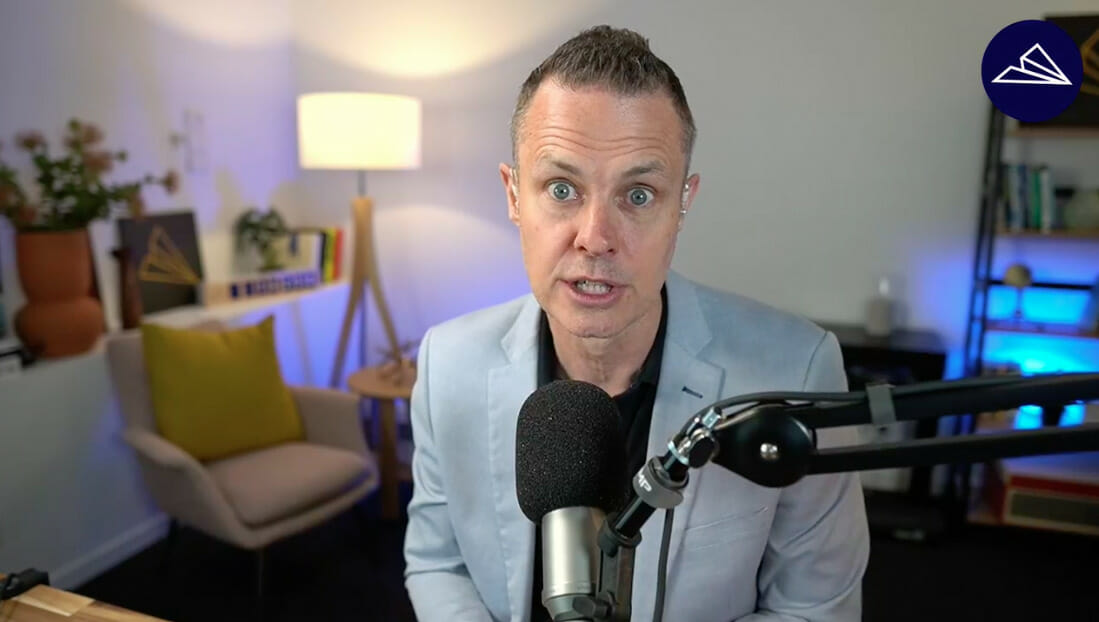If you’re running a web design or digital marketing business and you're not focused on attracting new, high-quality clients every day, then it's a problem. Because as the old saying goes…
Whatever your business, you’re in the business of selling
I get it though, when I ran my own web agency, I really didn't enjoy the sales part of my business.
But after years and years of doing sales calls, I've come to learn that sales can be fun… I promise!
All you need is a structure so that the sales conversation doesn't feel like a job interview where the prospective client starts asking you all questions.
You need to control the conversation and the easiest way to do that is to have a structure where you ask questions.
Enter The Sales Script for Digital Agencies
Most people charge thousands of dollars for their sales script and I’ve bought a few of them over the years (which were actually quite average to be honest)!
But after years of tweaking, testing and trying out different sales scripts, I've created a winning formula that I share within my coaching programs. And today, I'm going to share an in-depth overview of it with you.
This method is perfect for people who:
- Are introverted
- Don't know what to say without sounding pushy
- Are not confident at selling themselves and their services
- Are tired of the client trying to control the conversation
- Find that clients are always trying to negotiate on price
Ready?
Then let's dive in.
1. Rapport
Keep the rapport short and sweet. Ask how their day is going and then ask if they're OK to dive right in.
Taking control of the conversation starts here. It lets them know that you have an agenda.
Then let them know what to expect on the call which is to find out as much about them as possible and to see if they’re a good fit for you and the services you offer.
2. Reasons
Next, you tell them that before you dive in, you’d like to know:
- Why is it important now?
- Why have you chosen to talk to us?
3. Results
Then you want to get them focussed on their results and place yourself into that picture of helping them achieve those results by asking:
“If we were to work together in some capacity over the next 12 months and at the end of that 12 months, we are celebrating because it's been the most successful year ever, what would need to happen for you to be really happy with that outcome?”
They may just tell you a lot of things that are on their mind about the business, so try and get them to be as specific as possible. But only ask them to be more specific about the things that you know you can help them with. So for example, if you are a web designer you might ask them how many leads or conversions that they'd like each month from their website.
Get into as much detail with them as possible.
4. Reality
Now that you know where they want to go, ask them where they are currently at with all of the above things that you listed with them. This will help them become aware of the gap.
5. Roadblocks
Next, you want to go through the hurdles that are currently standing in their way of achieving their goals.
Try not to talk or give advice at this stage – the less you talk, the more they will share.
If they do stop talking ask:
“Can you be more specific about that?” Or “Can you tell me more about that?”
Again, you want them to go deep into what they see are their roadblocks on the way to their success.
6. Recap
The next step is to recap everything you've discussed so far.
- In 12 months time, you want to be….
- Right now you’re at….
- And we think the roadblocks are…
(Use the word “we” to embed yourself in their team) - Does that sound right?
- Have I missed anything?
Then finish up by asking
“What’s been most valuable about this conversation?”
Often they will say it’s great to talk to someone who understands their business, when in fact you haven't given any advice at all. All you did was ask questions and repeat the answers back to them.
Listening to your prospective client and mirroring them is the number one way you can build trust.
7. Release
This is where you get them to release control by asking two final questions that might seem counter-intuitive:
1. Why don’t you just stay where you are?
They’ll tell you why it’s important and re-commit to their motivation to solve their problems.
2. Why do you feel like you can’t manage this on your own?
This is where they will “buy you” without you having to do the selling! They will tell you why they thought you would be the person to help them.
8. Reach
Now it's time to show them the bridge that will get them over the gap to where they want to be.
Start by telling them that it seems that they are a good fit for your signature system which will help them achieve their goals (and list the specific goals again here).
Now the next part is important… This is when you ask:
- “Would you like the details on how it works?”
- “So I don’t overwhelm you with too much detail, what would you like to know specifically?
They’re not going to ask for price because at this point in the conversation they’ve already emotionally decided to buy. So what they’re doing now is logically justifying to themselves why they’re going to spend the money.
You need to be careful not to give too much information away, because if you overwhelm or confuse them, then that creates inaction like a deer in the headlights:

A confused mind does nothing.
So answer one question at a time, don’t over-explain and then be quiet.
Eventually, they’ll ask for the price, you tell the price and then again – stay quiet. You don't need to justify your price in any way – just say the price and that’s it.
But remember:
If you're nervous about your price – they will be too.
They might be ready to sign up or they may go quiet as their logical mind is trying to come into alignment with their emotional decision. That can take some time so just try to get comfortable with the silence.
Wrap Up
OK, so now you know all the steps to a successful sales call:
- Rapport: A little bit of small talk and then take control of the conversation
- Reasons: Why you? And why now?
- Results: Get them to be specific about the results they want
- Reality: Ask where they are currently at in their business
- Roadblocks: Ask what hurdles are in the way of them achieving these goals
- Recap: Relay the discussion back to them
- Release: Get them to release control with the two counter-intuitive questions
- Reach: They ask questions and you keep the answers simple
Note that if you feel that the person isn’t a good fit, then it's probably good to tell them earlier on in the call. You can politely tell them that you don’t think you’ll be able to give them the help they need and then recommend a course or another company that can better suit their needs.
Free Sales Training
If you need more help to get your sales process in place, then check out our free sales training series by joining our Digital Mavericks Facebook group and heading to the guides tab. Or click here if you're already a member and head straight there.





